Google's new Pixel 4 and Pixel 4 XL are strange devices. Last year's Pixel 3 XL had a huge, hideous notch, so this year's model got rid of it and replaced it with a massive top bezel. Inside of that bezel is Soli radar, which is used for, well, not much. Google finally went with a dual-lens camera, but it comes at a time when most OEMs are using triple-lens cameras.
And while the Pixel 4 is a confusing mix of cool new features and strange omissions, I fell in love with it. The camera is fantastic for a number of reasons, and the Live Transcribe feature is super useful. It's also just an all-around comfortable smartphone to use.
Specs
| CPU | Snapdragon 855, 2.84GHz + 1.78GHz |
|---|---|
| GPU | Adreno 640 |
| Body | Pixel 4: 68.8x147.1x8.2mm (2.7x5.7x0.3in), 162g Pixel 4 XL: 75.1x160.4x8.2mm (2.9x6.3x0.3in), 193g |
| Display | Pixel 4: 5.7 inches, FHD+, 19:9, OLED, 444ppi, 90Hz Smooth Display Pixel 4 XL: 6.3 inches, QHD+, 19:9, OLED, 537ppi, 90Hz Smooth Display |
| Battery | Pixel 4: 2800mAh, 18W fast charging, 18W Qi wireless charging Pixel 4 XL, 3700mAh, 18W fast charging, 18W Qi wireless charging |
| RAM | 6GB |
| Storage | 64GB/128GB |
| Camera | 12.2MP + 16MP, Front - 8MP |
| Aperture | f/1.7 + f/2.4, Front - f/2.0 |
| Video | 4K - 30fps, 1080p - 60fps, Front - 1080p - 30fps |
| Camera features | Astrophotography, dual exposure, 8x zoom |
| Colors | Just Black, Clearly White, Oh So Orange |
| Price | Pixel 4: $799/$899 Pixel 4 XL: $899/$999 |
Day one
Two-tone design
With all of the new features, it's almost easy to overlook the fact that the design of the Pixel phone has been redesigned for the first time. Traditionally, we've seen a glossy top and matte bottom of the back panel, but now it's all a matte color. It's still two-tone though, with a different color frame. The two-tone design is reminiscent of HTC's old Desire lineup, something that's no surprise since Google owns a big portion of HTC's former smartphone business.

For both the Pixel 4 and the Pixel 4 XL, Google sent me the Clearly White models. My personal favorite is Oh So Orange though. Of course, it's a matter of preference, as the two-tone look carries itself well.

In the top-left corner of that glass back, you'll find a square camera module with rounded corners. Yes, it's a similar look to Apple's new iPhone 11 series. And of course, there are only two lenses instead of three. The big difference is that this camera housing is smooth, where Apple's has bumps for each lens.

On the bottom of the device, there's a USB Type-C port for charging; that's also what you'll need to use for wired headphones. Sadly, you won't find a 3.5mm headphone jack on this device, although that's normal for a Pixel. For a headphone jack, you'll have to look to the mid-range with the Pixel 3a series.

On the left side of the device, there's just a nano-SIM card slot.

On the right, there's a power button and below that, the volume rocker. Google once again used a different color for the power button, which I've always assumed is to make it easier for people to tell the difference between that and the volume rocker. If nothing else, I think it adds a little bit of style.
Personally, I think that this is the most stylish Pixel phone ever. I like it a lot better than the single-color glossy/matte look. Then again, I've always been a fan of the HTC Desire series as well.
90Hz Smooth Display
The Pixel 4 and Pixel 4 XL have 5.7- and 6.3-inch displays, respectively. On the smaller one, the resolution is FHD+, and on the XL, it's QHD+. You won't be able to see the difference in the resolution. They're both 19:9, OLED, and have 90Hz refresh rates.
The screens are fantastic. I absolutely love that 90Hz screens are becoming more common. It's something we first saw from the OnePlus 7 Pro and ASUS ROG Phone. Most screens are 60Hz, so the higher refresh rate makes everything so much more smooth; it's just more pleasing on the eye.

And of course, OLED is always good. I feel like I don't have to talk about this as much anymore, since pretty much all premium smartphones have OLED screens, but OLED gives you true blacks. Colors tend to be more vibrant as well, since they're rendered on top of true black instead of on top of a backlight.
The bad news is that the 90Hz display isn't on all the time. In fact, it's only set to 90Hz if the brightness is 75% or more. You can turn on a Force 90Hz option in developer options, but that will affect battery life. The screen is nice without Smooth Display, but it's not as nice.
There's more bad news though. I found the adaptive brightness to be frankly awful, especially when I was in Florida. I found myself manually adjusting brightness more often than not.
Finally, let's talk about bezels. This is one of the rare phones where the chin isn't as big as the top bezel, which is massive. Google packs its Motion Sense radar in there, and honestly, I could do without it. Motion Sense is really just used for swiping between tracks in a music player and waking your phone.
Face unlock
This is also the first Pixel that doesn't have a fingerprint sensor on the back. In fact, there's no fingerprint sensor at all. Like Apple's iPhones, Google has opted instead for facial recognition.
Facial recognition works great. If the phone is awake, it will automatically log you in. It's fast, and it's accurate.
There's some bad news here too. For one thing, it works if your eyes are closed. With an iPhone, not only do your eyes have to be open, but you have to be looking directly at the device. Most reviewers will point out that someone can unlock your phone while you're sleeping, although that was arguably just as much of a concern with your fingerprint. Apologists will also tell you that if you're concerned about your partner unlocking your phone without your permission, you've got bigger problems.

But let's talk about real-world, less serious problems. When I'm driving, my wife might try to unlock my phone to change the music. She can't do that with an iPhone because I just have to look away from the device. She could with the Pixel.
The other bad news is that there really isn't any raise-to-wake functionality. Most of the time, I had to press the power button to wake the device and scan my face. The Motion Sense radar will sense movement, but it doesn't sense anything when you pull it out of your pocket.
Live Transcribe
Live Transcribe is a fantastic feature. I spent the past week at Microsoft's Ignite 2019 conference, and it's one of the reasons that I hadn't written this review yet. When recording something, the Pixel 4 will automatically transcribe whatever anyone is saying. It works well enough. You can't exactly copy and paste it as a script, but it makes your audio searchable, which is useful.
While recording, there are 'Audio' and 'Transcript' tabs. Tap on the transcript, and you'll see the words form as the person is talking. When you're playing back an existing recording, the word being spoken is highlighted, and you can tap on a word in the transcript to skip to that part of the audio. When you're done, you can export both the audio file and a text file to Google Drive.
This is super useful for meetings, classes, and so on. It makes it so easy to take a 45-minute recording and find exactly the right spot that you're looking for.
This is something that I appreciate about Google's Pixel devices. I feel like Google actually thought about the features that it was adding, and if they're useful in the real world. With the exception of Motion Sense, all of the features added in the Pixel 4 are actually meaningful.
Now Playing
Now Playing isn't a new feature for the Pixel 4, but it's one of my favorite features for any device. It's pretty simple. The device tells you what song is playing if there's music on. You don't even have to be online for it to work. In fact, you don't even have to do anything for it to work. The name of the song will just show up on the always-on display or in the notification shade.
Camera
For the first three generations of the Pixel, Google used a single-lens camera, and we praised its computational photography efforts. Now for the first time, the company added a second lens, and we're all upset, since there's no ultra-wide lens. I have to say, I did miss having one at times, and I'm not even a big user of ultra-wide lenses.
The Pixel 4 comes with a 12.2MP standard lens and a 16MP 2x zoom lens. What's particularly cool is that this is the first phone I've seen that doesn't offer a toggle between the different lenses. The idea is that Google doesn't want you to think about it. You just pinch to zoom, and it takes you where you want to go.
Google put a lot of work into zoom too, and even if you take the device up to 8x zoom, the photos came out really great. My original plan was to compare it to the Huawei P30 Pro, iPhone 11 Pro, and Pixel 3 XL, but I decided against it. It's not necessary. The zoom is better than the iPhone, but not as good as the P30 Pro, although the P30 Pro horribly oversharpens its images. Instead, I just want to focus on how good the zoom is on this device.
Portrait mode still zooms at 1.5x, something that it did on the single-lens models. As always, portrait mode is pretty great. Here are some samples:
You can also see Night Sight being used in some of the photos, and it comes out fantastic. Basically, it allows in light for a few seconds rather than taking a quick picture. If you do try to take a picture at night, you'll get a suggestion to try Night Sight. Personally, I'd rather the device turn it on automatically and have me turn it off if I don't want it.
Speaking of Night Sight, Google added an astrophotography feature. Yes, you can take pictures of the stars at night. All you have to do is turn on Night Sight and the feature will turn on if the camera is pointed at the sky. Rather than working for a few seconds like regular Night Sight, it will be for a few minutes.
The bad news is that you most certainly need to use a tripod for this, and you need to be in an area where there's minimal light pollution. I did it at the beach, pointing the camera out over the Atlantic Ocean. You kind of have to plan to do this, as it's not the most practical feature. You're not going to go camping one night, look at the beautiful sky, and take the picture, because you need additional gear.
You can place it up against a rock or something, but remember that you do still need to be able to touch the screen to start the picture.
The last feature I want to note is dual exposure. This was a great idea on Google's part. When you tap to focus, you'll get two sliders to adjust the image instead of just one.
This is a great smartphone camera. One thing that Google excels at is giving you the best possible image with the least possible effort. You can see above where there are many images that use the full 8x zoom, and even those images look sharp. Night Sight works well, and it doesn't require understanding how your smartphone camera works to use it, and dual exposure is intuitive.
Of course, there's no ultra-wide sensor, and sadly, there's no option for 4K 60fps video capture. You do have to choose between a high resolution and a high frame rate. And the front camera only records video at 1080p 30fps, whereas Apple's new iPhone 11 Pro supports recording 4K 60fps video with all three rear cameras and the front camera.
Battery life and performance
Normally, I'd call this section "Performance and battery life", but battery life is the real issue here, so it comes first. It's not good. In fact, I'd say that these devices made me realize how good Android battery life has gotten.
Most of the time, the Pixel 4 XL will get you through the day. Unfortunately, most of the time isn't good enough. The regular Pixel 4 just won't get you through the day. Both of these issues are made worse if you force the 90Hz display.

What we're talking about here is the confidence to leave home without a charger. The Pixel 4, and even the Pixel 4 XL, are the first phones in a while that don't give me that confidence. When I'm at home, my phone generally sits on a wireless charger most of the day, so it's fine. But even if you're in a place where you're always near a charger 99% of the time, this phone needs to work for you 100% of the time.
The Pixel 4's battery is 2800mAh, while the XL packs a 3700mAh battery. For Android phones in 2019, 3700mAh isn't big, but 2800mAh is tiny. The lower resolution screen on the non-XL does compensate a bit, but not completely.
As far as performance goes, it's fine. The Pixel 4 uses a Snapdragon 855 chipset with 6GB RAM. Some people have criticized Google for not using a Snapdragon 855+, but it's worth keeping in mind that the 855+ is designed for gaming phones.
For benchmarks, I used Geekbench 4, Geekbench 5, AnTuTu, and GFXBench. First up is Geekbench 4 and Geekbench 5. I use both because Geekbench 5 scores devices differently, so the former is better for comparing to older devices.
You can compare this to the OnePlus 7 Pro, which has the same chipset and twice as much RAM, and that got 3,500 and 11,203 on single- and multi-core, respectively. Seriously though, 6GB RAM should be fine for just about any use case.
You can compare this one to the OnePlus 7T, since I didn't have Geekbench 5 for the 7 Pro. The 7T packs a Snapdragon 855+ and 8GB RAM. It got 785 on single-core and 2,816 on multi-core. Next up is AnTuTu, which does an all-in-one test.
While the Pixel 4 didn't do as well on the CPU-based Geekbench tests, it beat the OnePlus 7 Pro's 375,113 score on the all-in-one AnTuTu test. The score particularly outperformed OnePlus in the RAM section, where the Pixel got 24,664 and the OnePlus 7 Pro got 4,264. The OnePlus 7T got 394,795 on the test, but the story is the same for the RAM.
Finally, GFXBench tests the GPU:
Conclusion
As I said in the title, I wasn't expecting to love these phones so much. It's just this weird mix of great new features and strange omissions, and I was well aware of the shortcomings heading into my testing. I knew to expect poor battery life, that there's no ultra-wide camera, that there's no 4K 60fps video capture, and that it has a massive top bezel.

What I didn't expect was how easily this would settle in as my daily driver, or how I always went toward the Pixel when it came time to take a picture. I can't tell you how many devices I review where I have a second phone with me for pictures, because I don't want to trust that device to capture a memory that I care about. The Pixel pushed my worries aside without telling me it was doing so. It just happened naturally.
And battery life concerns aside, it's just a good phone. The display is pretty, even with Smooth Display turned off, and it has the stock Android experience that we know and love. Google adds some common sense features on its devices too. Live Transcribe is useful, and it just happens. You don't have to turn it on when you need it; the same goes for Now Playing, which just automatically tells you what songs are playing.
The technology just seems to get out of the way. There aren't any pop-ups telling you how to do things. They just work, and it's intuitive. Personally, I think the Google Pixel 4 is a solid buy, if only because despite some shortcomings, it ended up working for me in a way that few smartphones do.













































































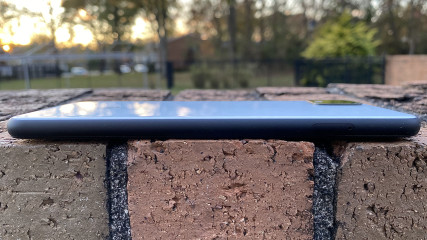
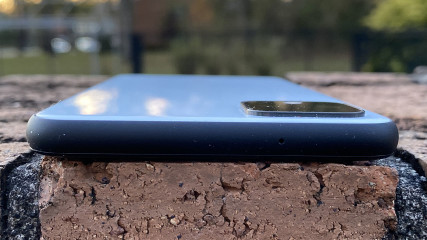
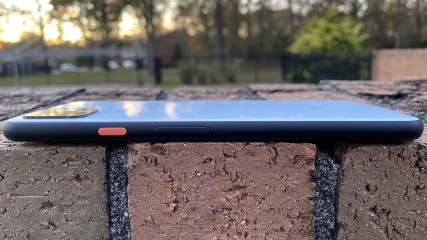
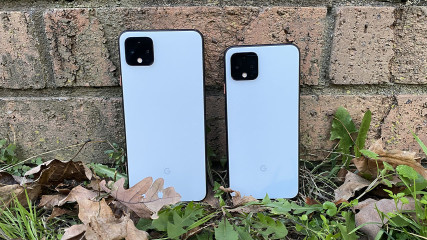

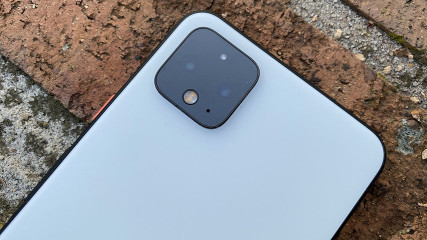
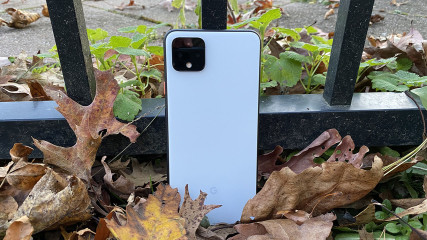
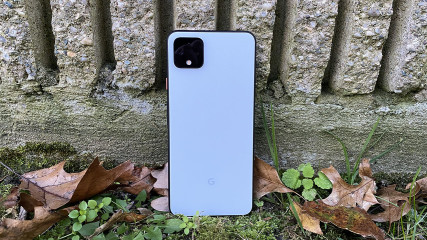











22 Comments - Add comment